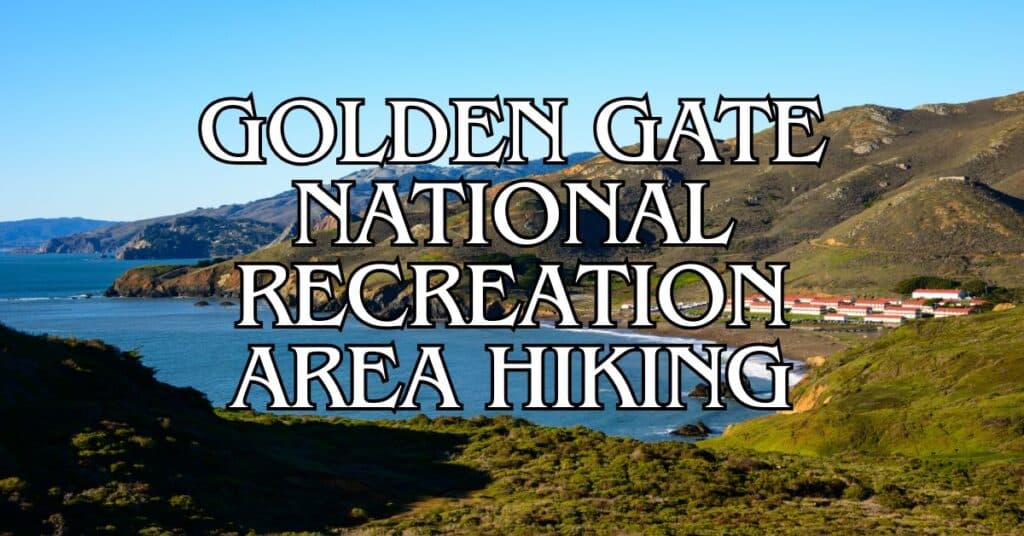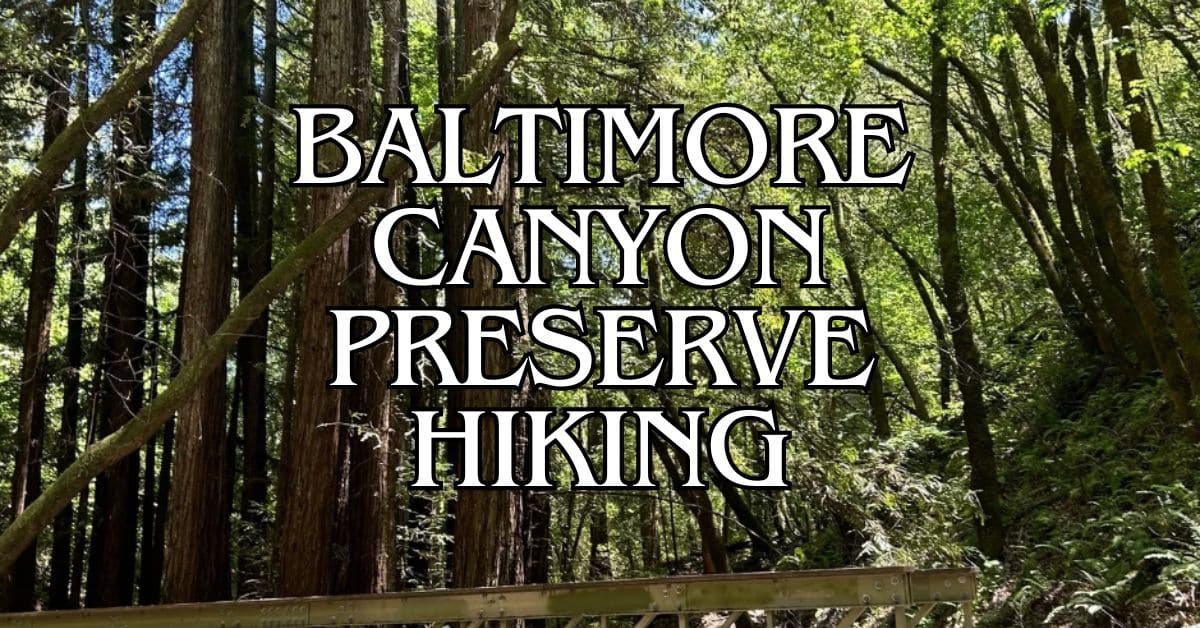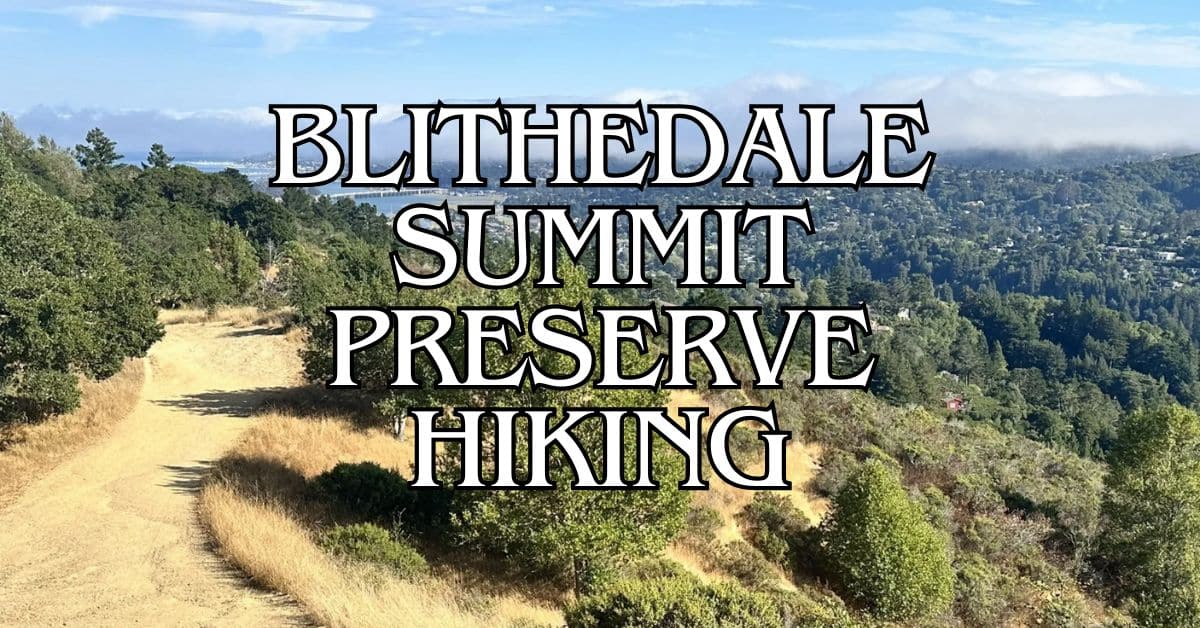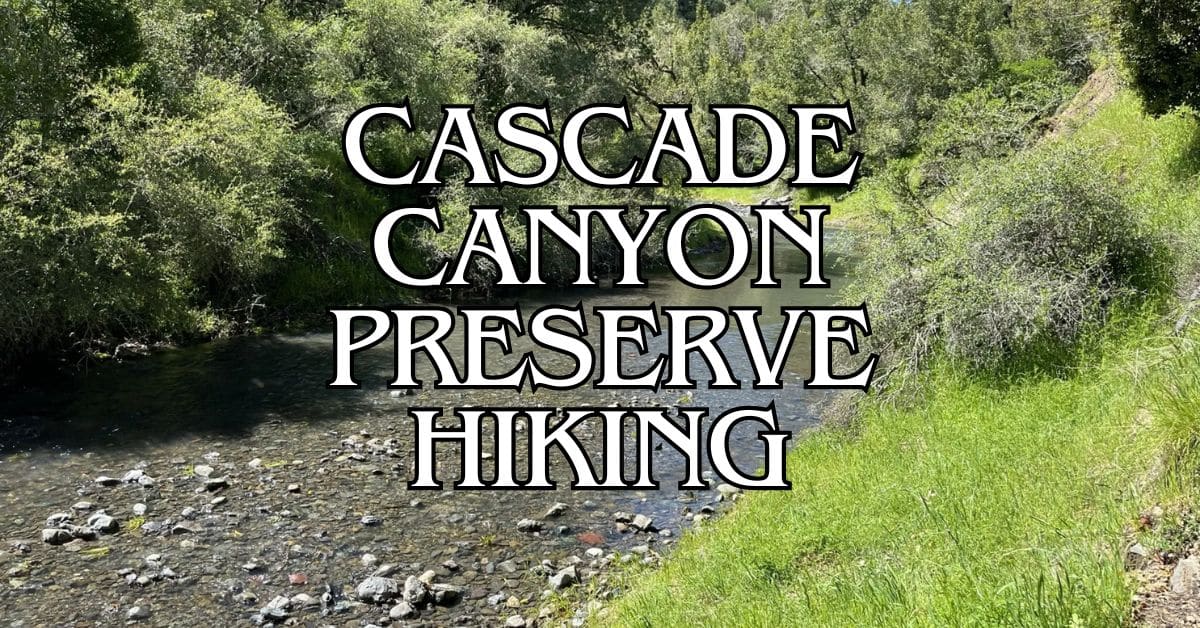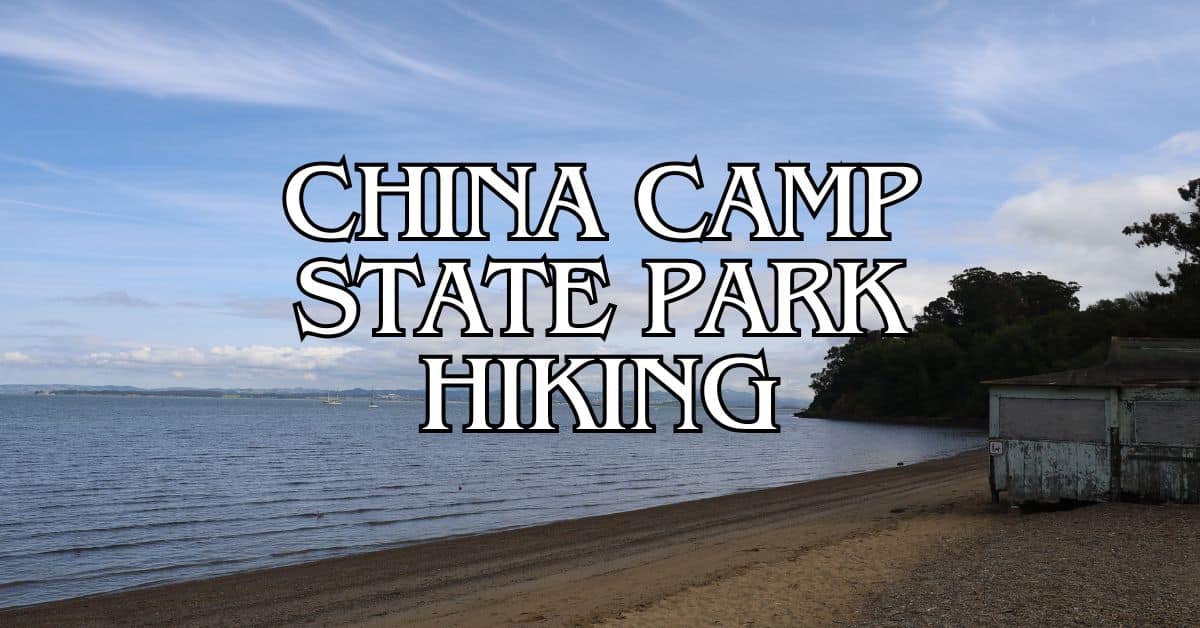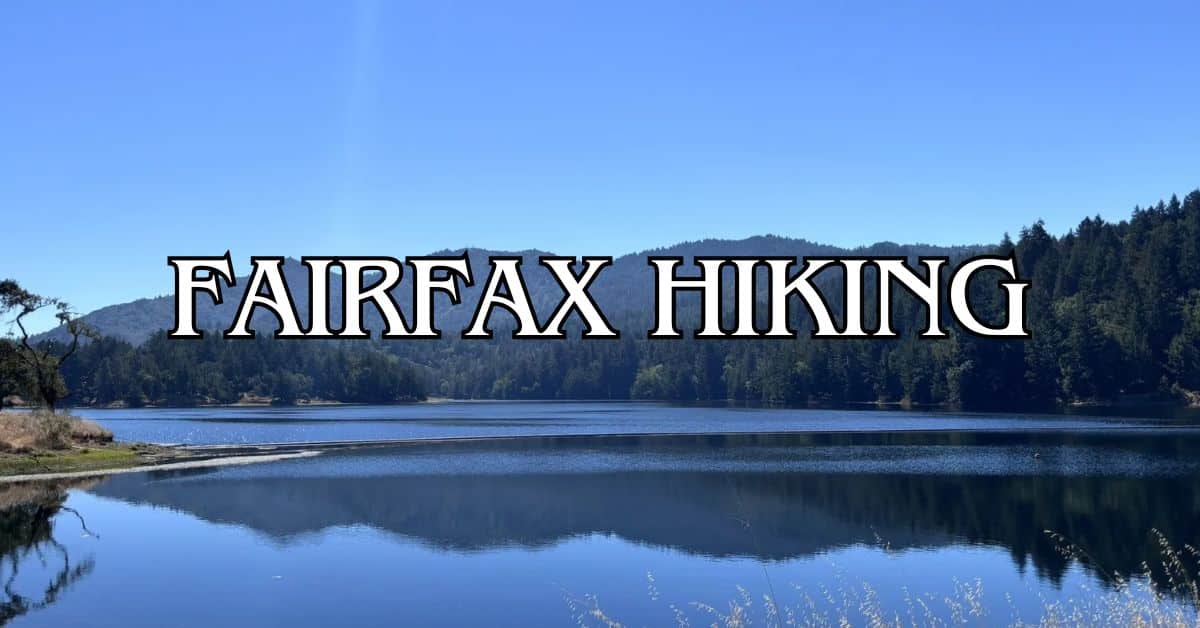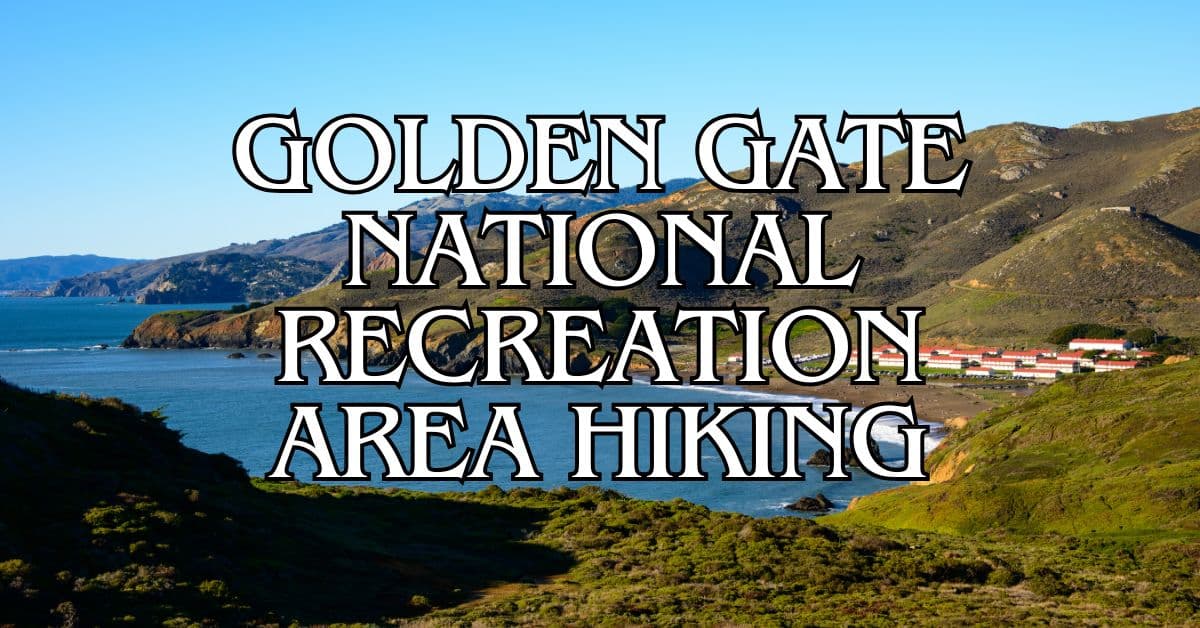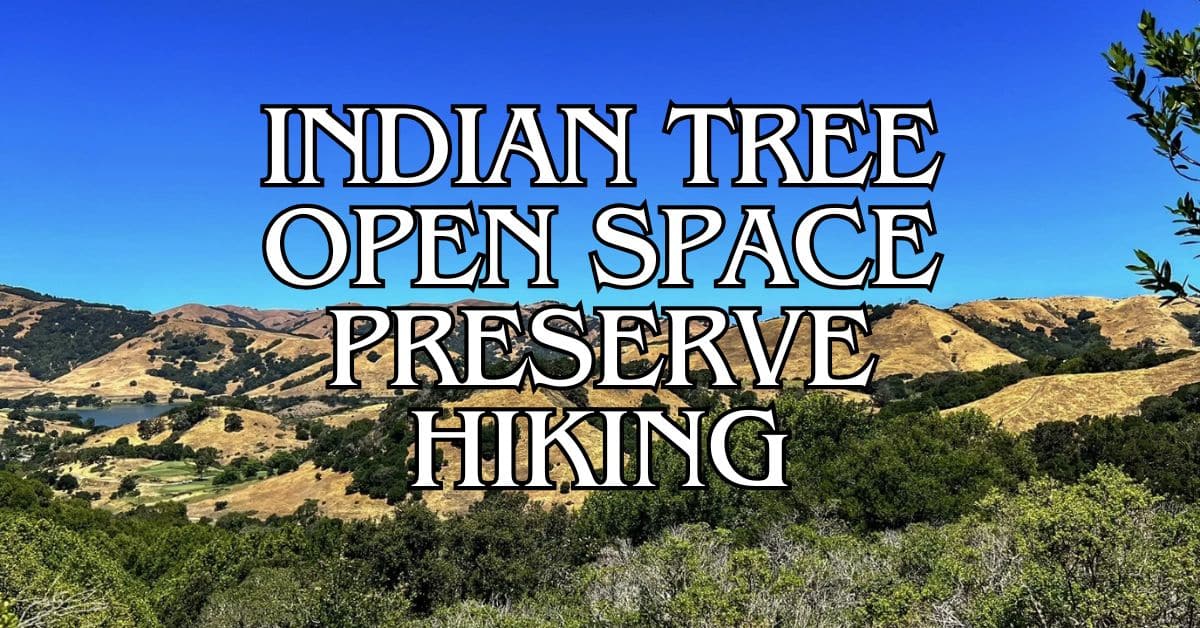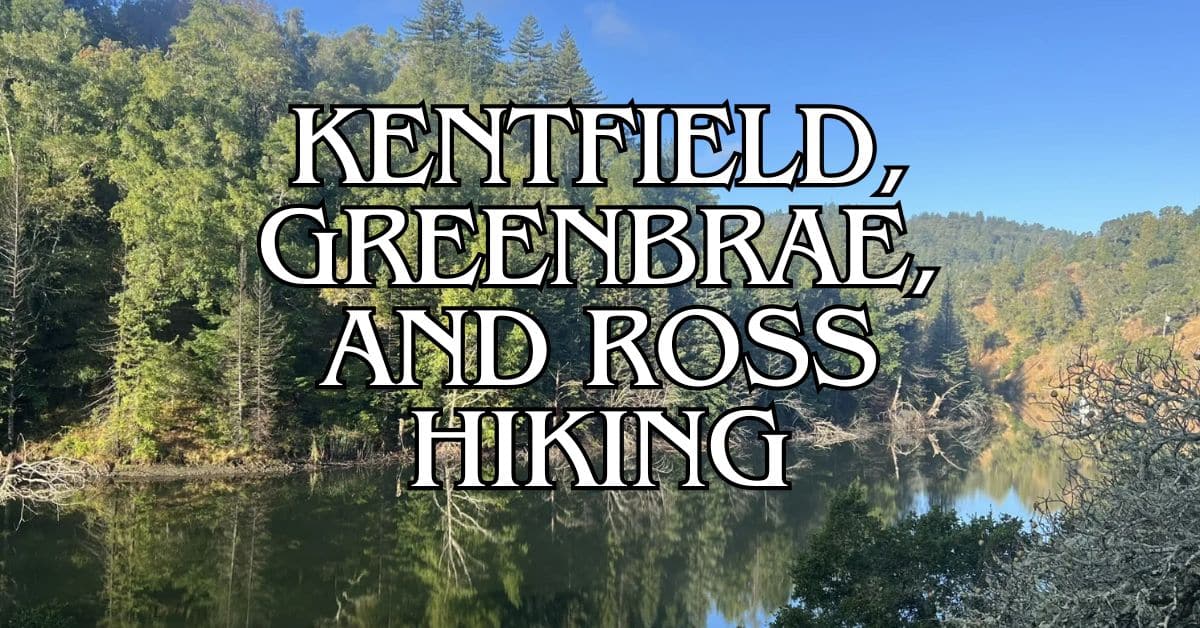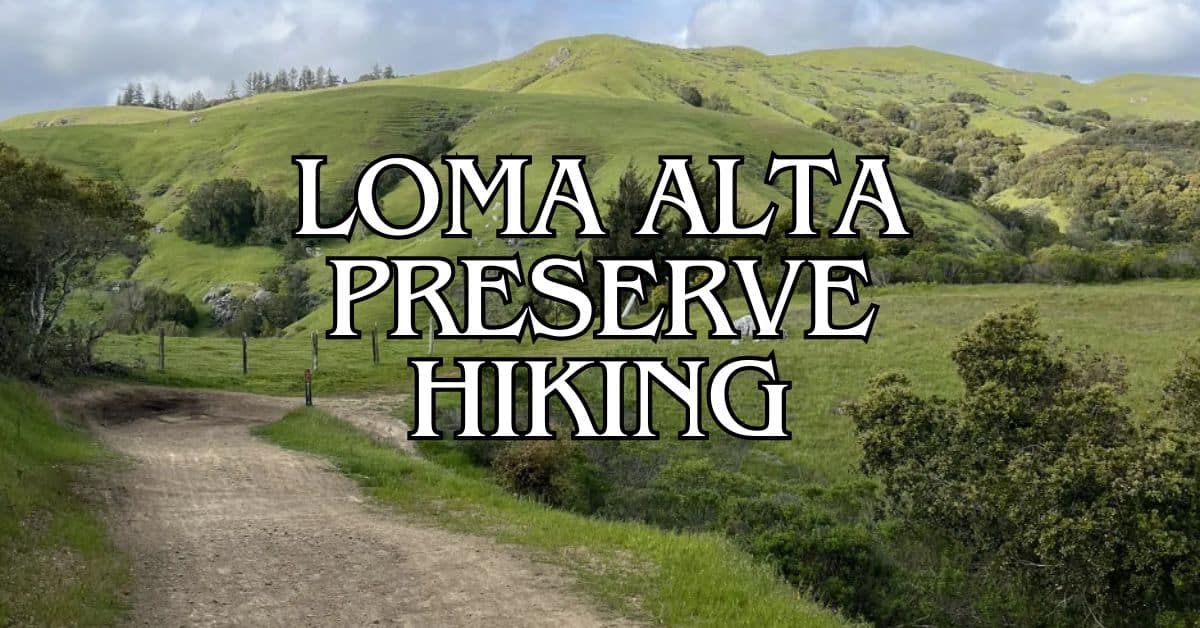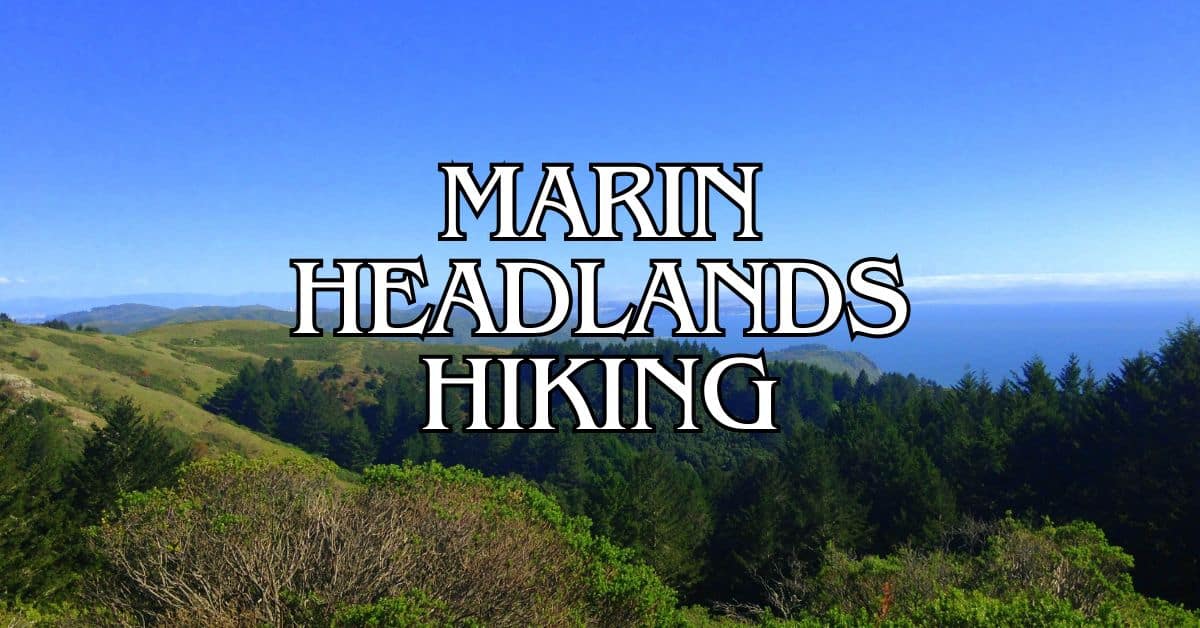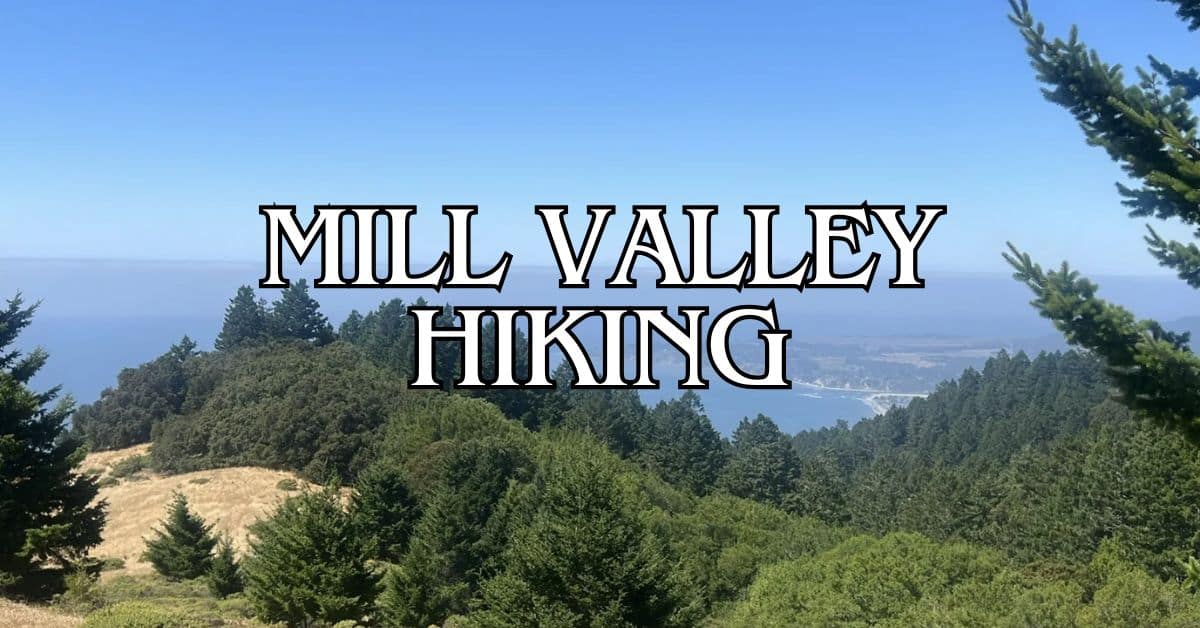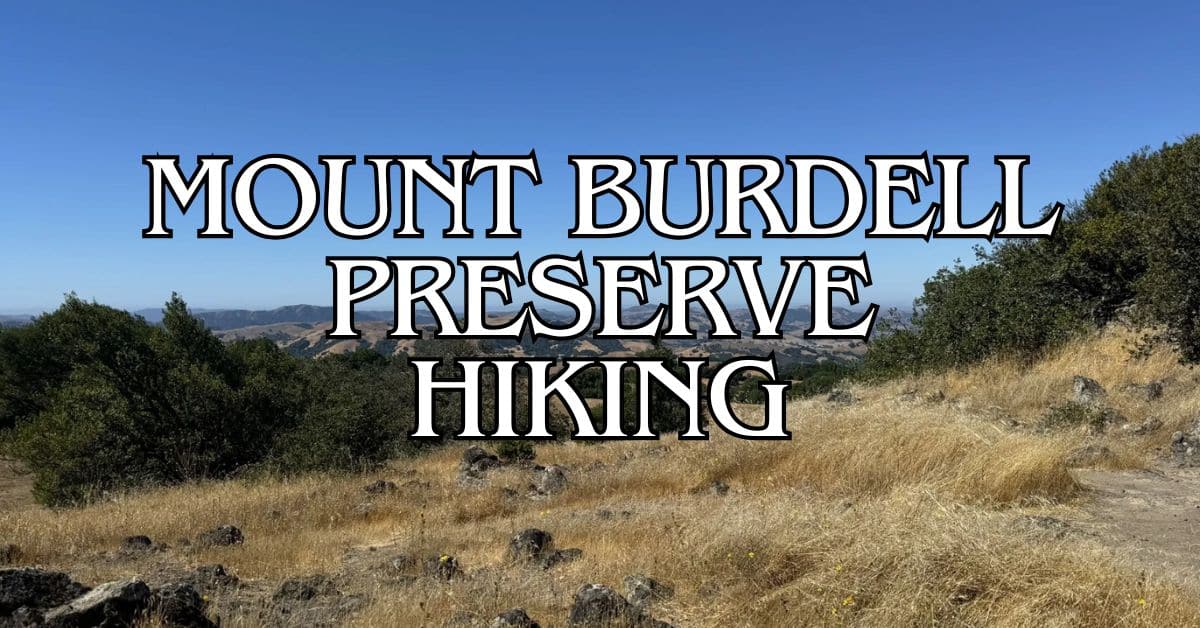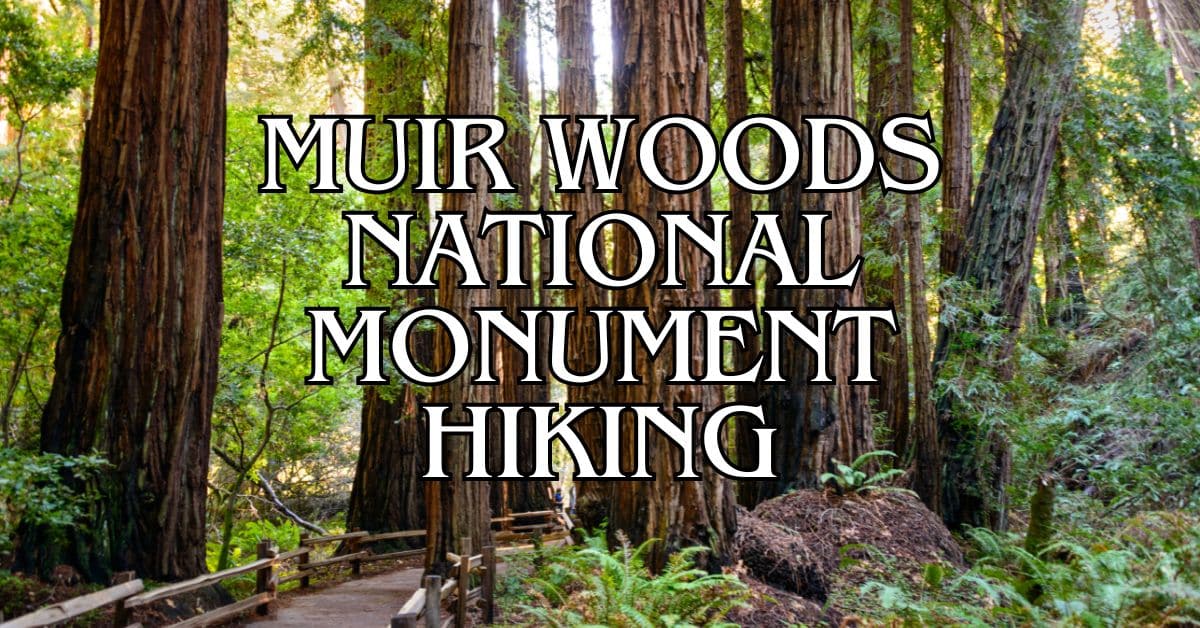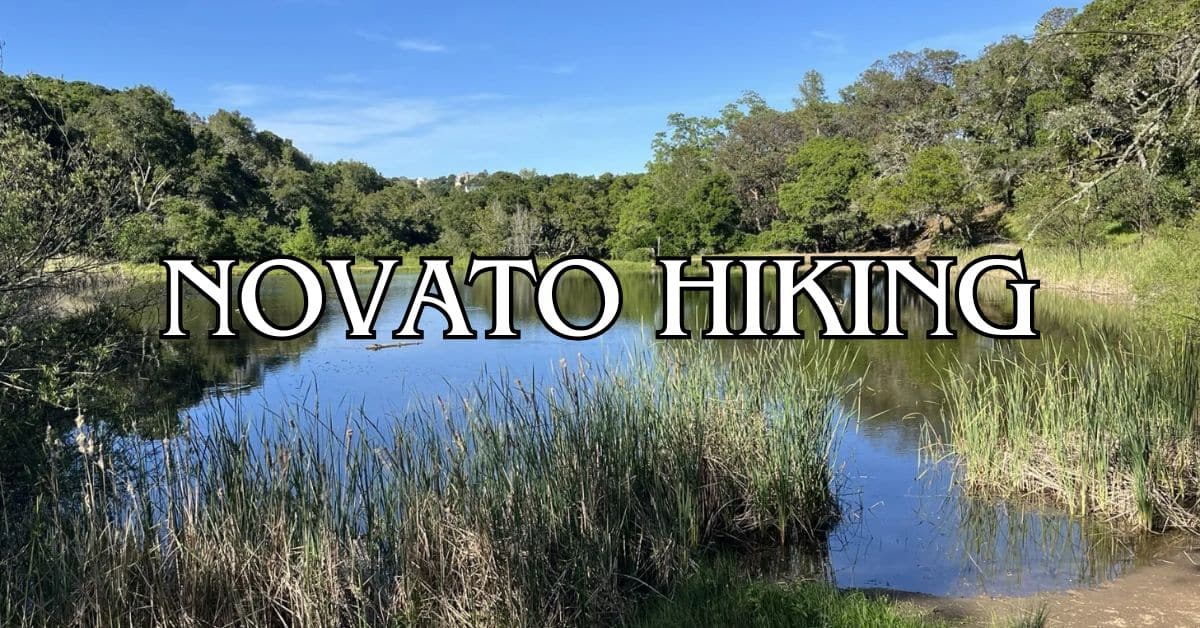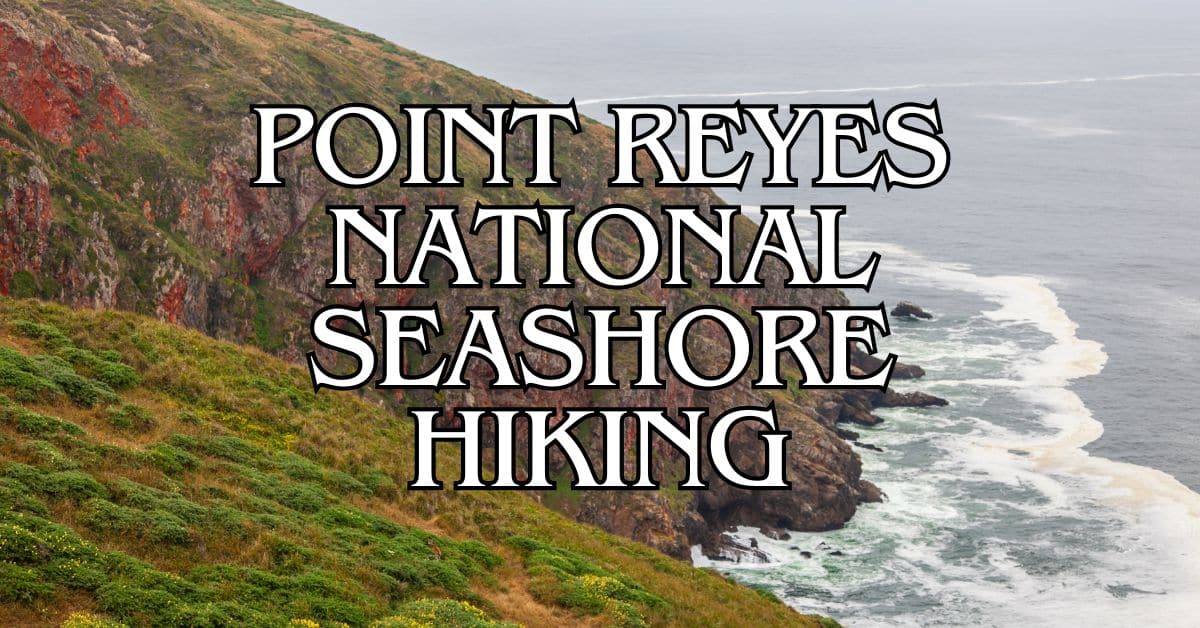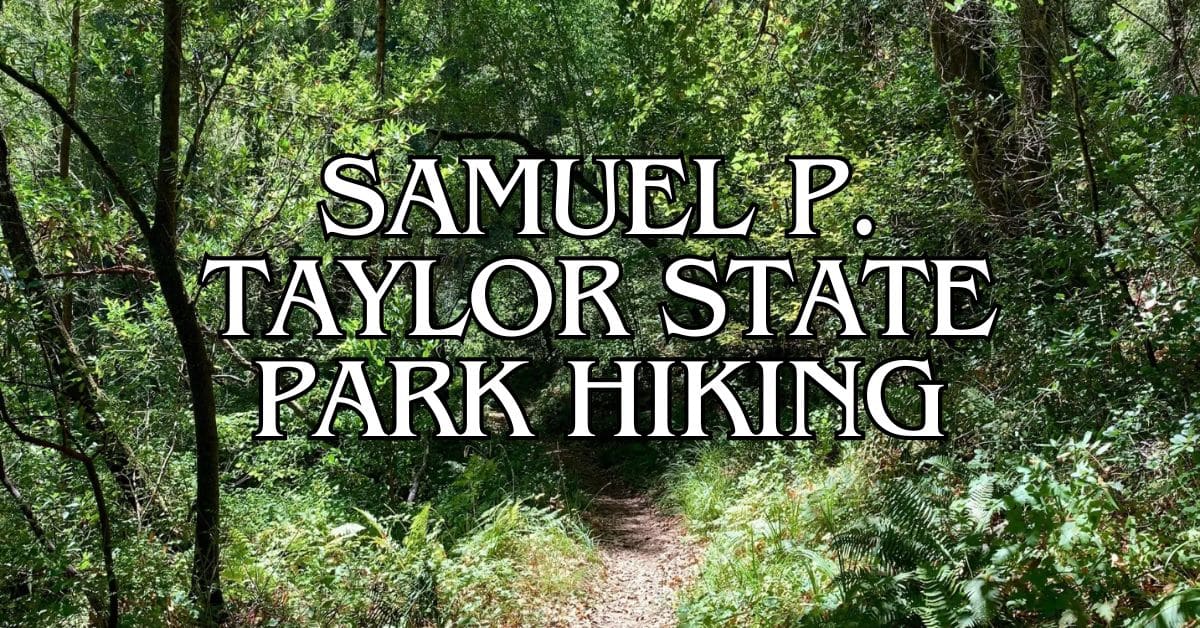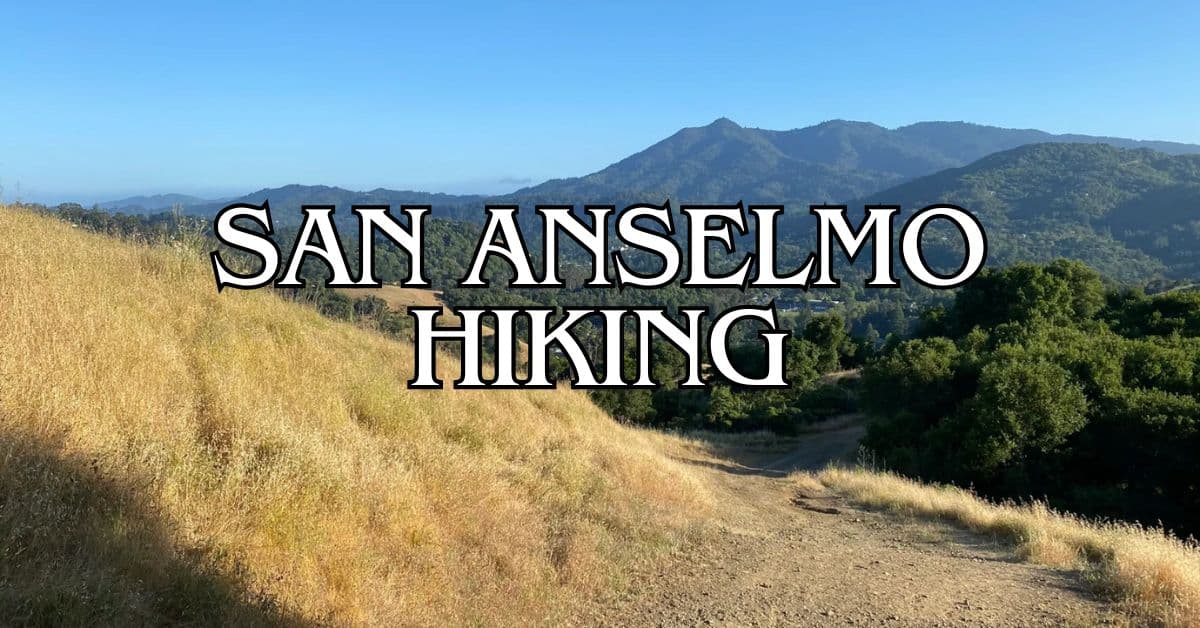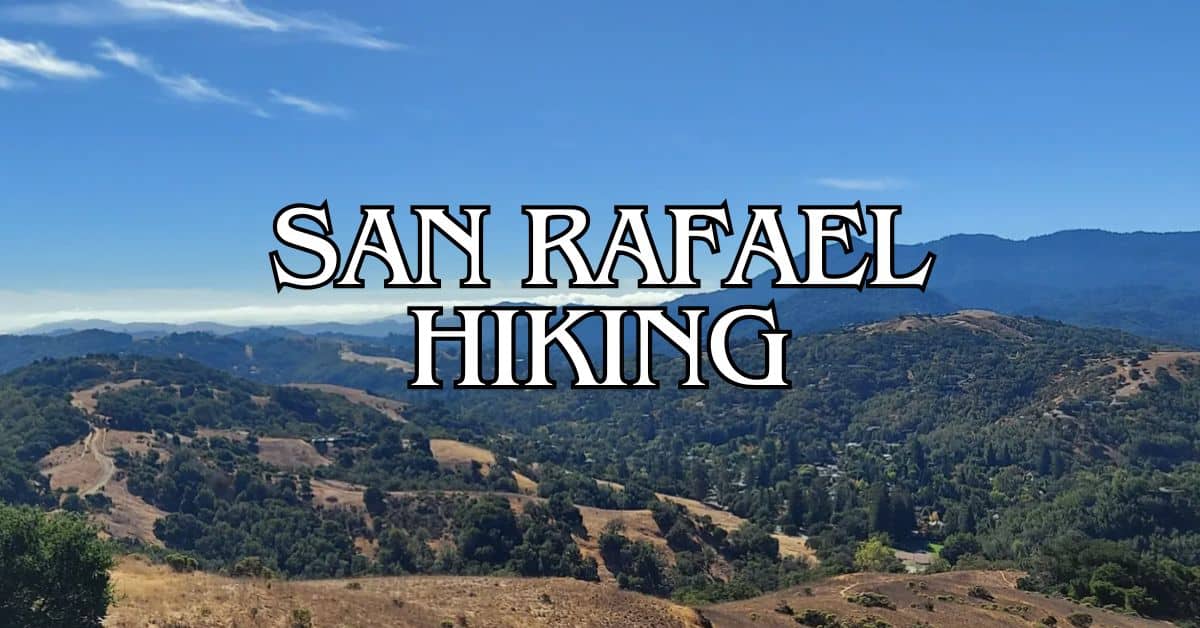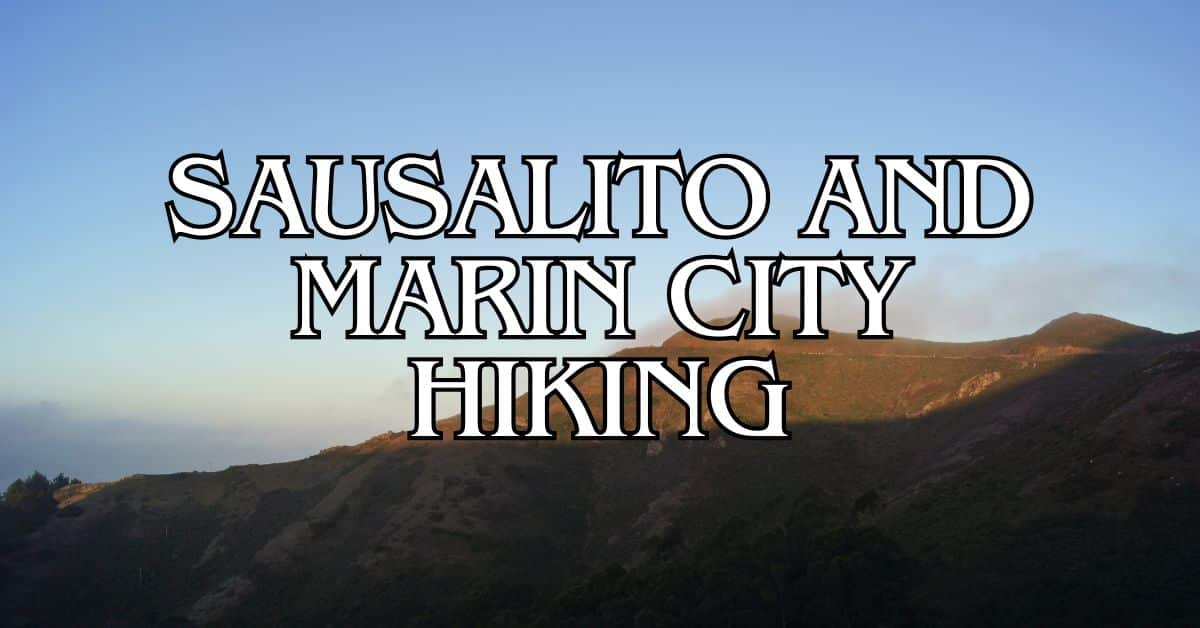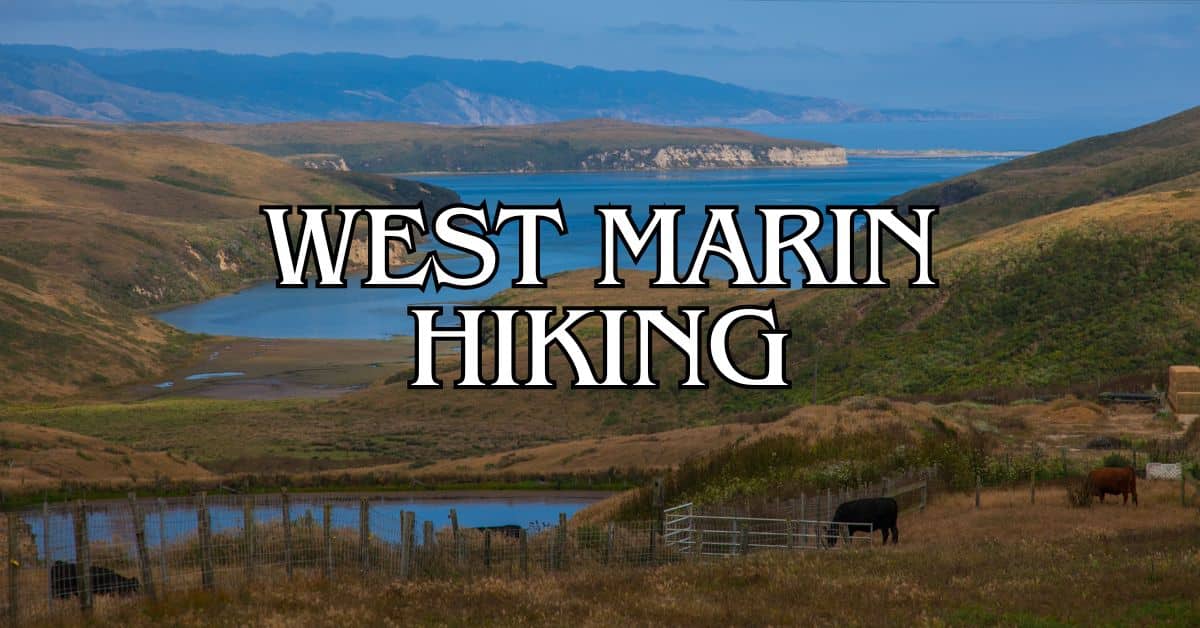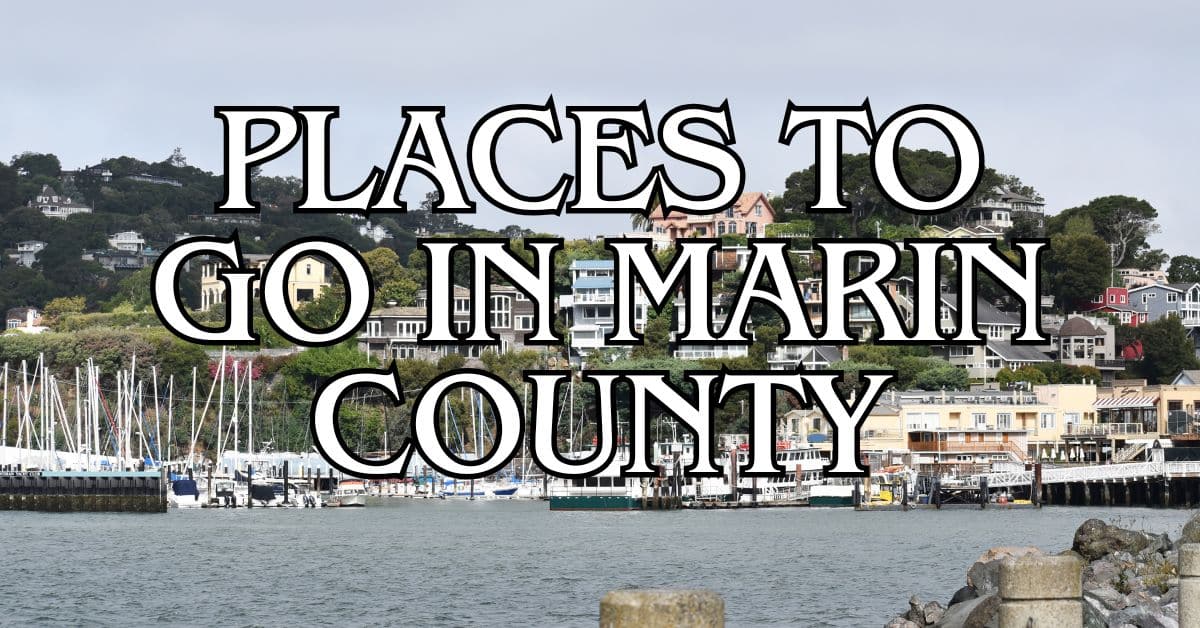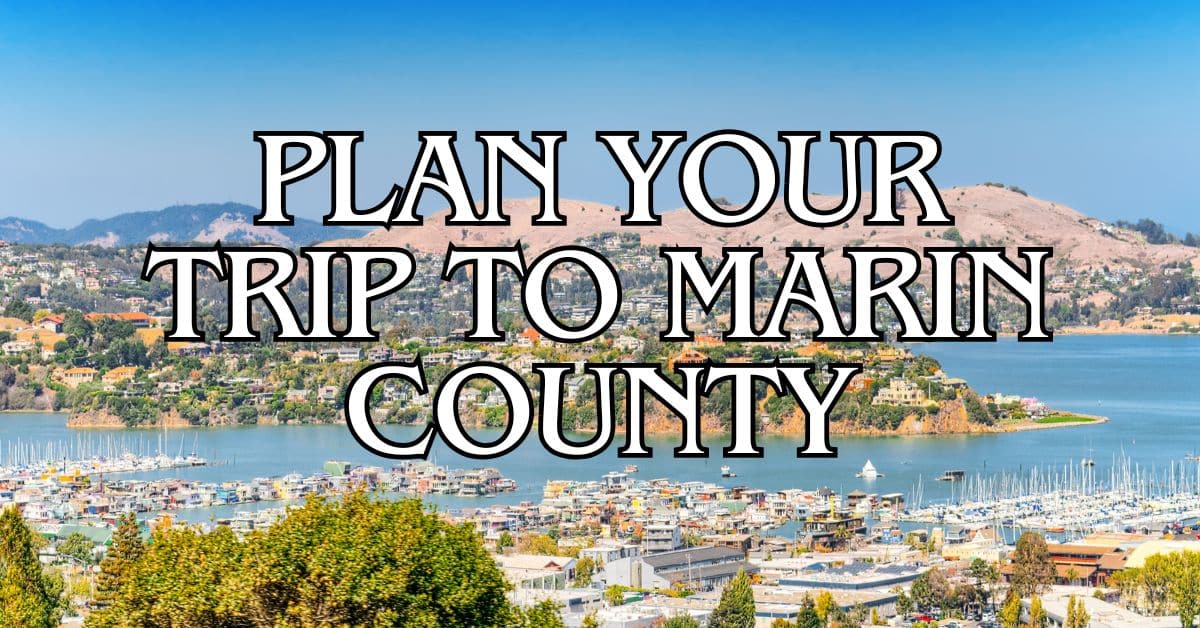Golden Gate National Recreation Area is a hiker’s paradise near San Francisco. With over 250 trails spanning 140 miles, it offers breathtaking views and exciting adventures.
From coastal paths to forest walks, there’s something for everyone.
Get a discount of 15% to 70% on accommodation in Marin County! Look for deals here:
Marin County Hotels, Apartments, B&Bs
The area’s top 5 hiking trails showcase the best of Northern California’s natural beauty. You’ll find routes for all skill levels, from easy strolls to challenging climbs.
Each trail gives you a chance to see stunning landscapes and maybe even spot some local wildlife.
Get ready to explore Golden Gate’s diverse terrain. You’ll walk along sandy beaches, climb rocky hills, and wander through lush forests.
These trails let you experience the area’s rich history and unique ecosystems up close.
Pack your hiking boots and get set for an unforgettable outdoor experience in one of America’s most beautiful regions.
1. Tennessee Valley Golden Gate Loop
The Tennessee Valley Golden Gate Loop offers a diverse hiking experience with coastal views, varied terrain, and rich history. This trail showcases the best of Golden Gate National Recreation Area’s natural beauty and provides a rewarding challenge for hikers.
Difficulty
The Tennessee Valley Golden Gate Loop is rated as moderate. It features some steep climbs and descents, uneven terrain, and exposed sections.
The trail is suitable for hikers with some experience and good fitness levels.
Sturdy hiking shoes are recommended due to rocky and sometimes slippery surfaces. Some parts of the trail can be narrow, requiring careful footing.
Length and Estimated Time
The loop trail covers 5.7 miles (9.2 km). Most hikers complete the loop in about 3 hours.
This time can vary based on your pace and how often you stop to enjoy the views or take breaks.
Plan for extra time if you want to explore Tennessee Beach or take lots of photos. The diverse scenery makes it tempting to linger at various points along the trail.
Key Features
The trail offers stunning coastal views of the Pacific Ocean and the Marin Headlands. You’ll pass through diverse landscapes, including:
- Lush valleys
- Coastal bluffs
- Golden grasslands
- Eucalyptus groves
A highlight is reaching Tennessee Beach, a secluded cove where you can see the remains of the SS Tennessee shipwreck at low tide. The beach is a perfect spot for a picnic or a quick rest.
Best Times to Visit
Spring and fall offer the most pleasant hiking conditions. Wildflowers bloom in spring, while fall brings clear skies and mild temperatures.
Summer can be foggy, especially in the mornings. The fog often burns off by afternoon, revealing spectacular views. Winter can be wet and muddy, but also provides lush green landscapes.
Weekdays are less crowded than weekends.
For the best experience, start early in the morning to avoid peak crowds and afternoon heat.
Parking
The trailhead is at the Tennessee Valley Staging Area. It has a large parking lot that can fill up quickly on weekends and holidays.
Arrive early to secure a spot. Overflow parking is available along Tennessee Valley Road, but be sure to park legally and not block traffic.
Safety Tips
- Bring plenty of water, as there are no water sources along the trail.
- Wear layers, as coastal weather can change quickly.
- Stay on marked trails to protect the environment and avoid poison oak.
- Be cautious on steep sections, especially after rain when trails can be slippery.
- Watch for wildlife, including coyotes and rattlesnakes.
- Inform someone of your hiking plans before setting out.
Historical Notes
The trail’s name comes from the SS Tennessee, a steamship that ran aground in 1853. All 550 passengers were safely evacuated, but the ship’s remains can still be seen at low tide.
The area was once part of a dairy ranch. You may spot old farm buildings and equipment along the trail, remnants of the area’s agricultural past.
Amenities
- Restrooms are available at the trailhead parking lot.
- There are no water fountains on the trail, so bring your own water.
- Picnic tables are available near the parking area.
- No food or drinks are sold in the immediate area, so pack snacks and water.
Usage Information
The trail is popular for hiking and trail running. Mountain bikes are not allowed on most sections of this loop.
Dogs are not permitted on the coastal portion of the trail to protect wildlife. They are allowed on leash on the Tennessee Valley Trail to the beach.
The trail can get busy on weekends and holidays. For a quieter experience, try hiking on weekdays or early mornings.
Trail Connections
The Tennessee Valley Golden Gate Loop connects to several other trails in the Marin Headlands:
- Coastal Trail: Extends north towards Muir Beach and south towards the Golden Gate Bridge.
- Fox Trail: Offers an alternative route with different views.
- Miwok Trail: Leads to panoramic ridgetop vistas.
These connections allow you to extend your hike or create custom loops for longer adventures in the area.
2. Pirate’s Cove
Pirate’s Cove is a stunning coastal trail in Golden Gate National Recreation Area. It offers breathtaking ocean views, a secluded beach, and diverse wildlife. This hike is perfect for those seeking a mix of challenge and natural beauty.
Difficulty
The trail is rated as moderate. It has some steep sections and uneven terrain. You’ll need good hiking shoes and a decent fitness level.
The path can be slippery after rain, so be careful.
Length and Estimated Time
The trail is 3.8 miles round trip. Most hikers complete it in 2-3 hours.
This includes time for breaks and photos. If you want to spend time at the beach, plan for an extra hour.
Key Features
Pirate’s Cove offers amazing coastal views. You’ll see rugged cliffs and the vast Pacific Ocean. The trail leads to a secluded beach perfect for relaxing. Look out for:
- Wildflowers in spring
- Migrating whales (December to May)
- Diverse bird species
- Unique rock formations
The cove itself is a hidden gem. Its small, sandy beach is great for picnics.
Best Times to Visit
Spring and fall are ideal for this hike. The weather is mild and wildflowers bloom in spring.
Summer can be foggy, but it’s still a good time to visit. Winter brings clear days but can be rainy and muddy.
Early mornings offer the best chance for clear skies. Weekdays are less crowded than weekends.
Parking
Parking is available at the Tennessee Valley Trailhead. The lot can fill up on weekends and holidays, so arrive early to secure a spot. There’s no fee for parking.
Safety Tips
- Stay on marked trails to avoid erosion and protect plants.
- Watch your step on steep and uneven sections.
- Bring water and snacks. There are no facilities on the trail.
- Check tide schedules if you plan to explore the beach.
- Be aware of poison oak along the trail.
- Don’t approach or feed wildlife.
Historical Notes
Pirates once used this cove as a hideout. They would wait for passing ships to raid. Today, it’s a peaceful spot for hikers and nature lovers.
Amenities
There are no amenities on the trail itself. At the trailhead, you’ll find:
- Restrooms
- Water fountains
- Information boards
Bring everything you need for the hike, including water and snacks.
Usage Information
The trail is popular for hiking and bird watching. Dogs are not allowed on this trail. The path is too narrow for bikes. Be prepared to share the trail with other hikers, especially on weekends.
Trail Connections
Pirate’s Cove Trail connects to other paths in the area:
- Tennessee Valley Trail
- Coastal Trail
You can extend your hike by taking these connected trails. The Tennessee Valley Trail offers a gentler hike with different views.
3. Slacker Hill via Morning Sun, Alta, SCA and Slacker Ridge
Slacker Hill via Morning Sun, Alta, SCA and Slacker Ridge is a stunning hike in the Golden Gate National Recreation Area. You’ll enjoy breathtaking views of San Francisco, the Golden Gate Bridge, and rolling hills. This trail offers a mix of challenges and rewards.
Difficulty
This trail is moderately challenging. You’ll face steep sections with switchbacks and some rocky terrain.
Parts of the trail are narrow, requiring careful footing. The elevation gain adds to the difficulty, but the views make it worthwhile.
Length and Estimated Time
The trail is 4.4 miles out and back. Most hikers complete it in about 2 hours. Your pace may vary based on fitness level and how often you stop for photos or rest.
Key Features
- Panoramic views of San Francisco Bay
- Golden Gate Bridge vistas
- Rolling hills and diverse plant life
- Scenic overlooks perfect for photography
The trail passes through shrublands and wetlands. At the top, you’re rewarded with 360-degree views of the area.
Best Times to Visit
Spring and fall offer the most pleasant hiking conditions. Wildflowers bloom in spring, adding color to the landscape. Fall brings clearer skies, ideal for far-reaching views.
Summer can be foggy, especially in the mornings. Winter hiking is possible but can be muddy after rain.
Parking
A parking lot is available at the Morning Sun Trailhead. It’s free but can fill up quickly on weekends and holidays. Arrive early to secure a spot.
Safety Tips
- Wear sturdy hiking shoes with good traction
- Bring plenty of water, as there are no water sources on the trail
- Use sunscreen and wear a hat, as parts of the trail have little shade
- Be cautious on narrow and steep sections, especially in wet conditions
- Watch for poison oak along the trail edges
Historical Notes
The area has been part of the Golden Gate National Recreation Area since 1972. Native American tribes, including the Coast Miwok, lived in this region for thousands of years before European settlement.
Amenities
There are no restrooms or water fountains on the trail. The nearest facilities are at nearby Tennessee Valley or Rodeo Beach.
Pack out all trash as there are no garbage cans along the route.
Usage Information
The trail is popular for hiking, running, and bird watching. Dogs are not allowed on this trail to protect the local wildlife and plant life. The path is shared with mountain bikers in some sections, so stay alert.
Trail Connections
From Slacker Hill, you can connect to other trails in the Marin Headlands.
The SCA Trail offers options to extend your hike. You can also link up with the Coastal Trail for a longer adventure with ocean views.
4. Kirby Cove
Kirby Cove is a hidden gem in the Golden Gate National Recreation Area. This trail offers stunning views of the Golden Gate Bridge and San Francisco Bay. It’s a popular spot for camping and photography.
Difficulty
The Kirby Cove trail is rated as moderate. It has a steep downhill section at the start and a challenging uphill climb on the return.
The path is well-maintained but can be slippery when wet.
Length and Estimated Time
The trail is about 2 miles round trip. You can expect to spend 1-2 hours hiking, not including time at the beach.
Add extra time if you plan to relax or take photos at the cove.
Key Features
Kirby Cove boasts a pristine coarse-sand beach with breathtaking views. You’ll see the Golden Gate Bridge, San Francisco skyline, and Pacific Coast. The cove has a rope swing that’s popular for photos.
A small campground sits near the beach. It has five sites available for overnight stays.
Best Times to Visit
Spring and fall offer the best weather for hiking. Summer can be foggy, but this adds a mystical atmosphere. Winter brings clearer skies but colder temperatures.
Early mornings provide the best chance for clear views. Sunset is stunning but can be crowded.
Parking
Parking is limited at the trailhead. There’s a small lot near Battery Spencer. Arrive early on weekends to secure a spot.
Overflow parking is available along Conzelman Road.
Safety Tips
- Stay on designated trails to avoid poison oak.
- Be cautious on steep sections, especially in wet conditions.
- Bring layers for changing weather.
- Watch for wildlife, including coyotes and rattlesnakes.
- Don’t turn your back on the ocean due to strong waves and currents.
Historical Notes
Kirby Cove was once part of the coastal defense system. The trail passes by Battery Kirby, built in the late 1800s. These fortifications protected San Francisco Bay during wartime.
The area became part of the Golden Gate National Recreation Area in 1972.
Amenities
Kirby Cove has basic amenities:
- Picnic tables near the beach
- Fire rings at campsites
- Vault toilets in the campground
- No drinking water (bring your own)
There are no trash cans, so pack out all waste.
Usage Information
- Dogs are not allowed on the trail or beach.
- Bikes are prohibited on the hiking trail.
- Camping requires a permit, available through recreation.gov.
- The beach and trail are open from sunrise to sunset.
Trail Connections
Kirby Cove trail connects to other paths in the Marin Headlands:
- You can link to the Coastal Trail for a longer hike.
- Battery Spencer is a short walk from the trailhead.
- The Tennessee Valley Golden Gate Loop is nearby for more hiking options.
5. Coastal Trail and Coastal Fire Road Loop
The Coastal Trail and Coastal Fire Road Loop offers stunning views of the Pacific Ocean and diverse coastal landscapes. This popular trail combines natural beauty with challenging terrain, making it a favorite among hikers in the Golden Gate National Recreation Area.
Difficulty
This trail is rated as moderately challenging. You’ll encounter some steep sections and uneven terrain. The loop includes both paved and unpaved paths. Sturdy hiking shoes are recommended.
Be prepared for some strenuous uphill climbs, especially on the Coastal Fire Road portion. The coastal section is easier, with gentler slopes and more level ground.
Length and Estimated Time
The loop is about 4.4 miles (7.1 km) long. Most hikers complete it in 2 to 3 hours.
Your pace may vary based on fitness level and how often you stop to enjoy the views. Plan for extra time if you want to take photos or rest at scenic spots.
Key Features
- Panoramic ocean views
- Diverse coastal plant life
- Wildlife sightings (birds, deer)
- Historic military structures
The trail offers breathtaking vistas of the Pacific Ocean and San Francisco Bay. You’ll pass through varied ecosystems, from windswept cliffs to sheltered valleys. Keep an eye out for native plants and animals.
Best Times to Visit
Spring and fall are ideal for hiking this trail. Wildflowers bloom in spring, while fall brings clear skies and mild temperatures.
Summer can be foggy, especially in the mornings. Winter offers dramatic ocean views but can be rainy and muddy.
Weekdays are less crowded. If hiking on weekends, start early to avoid peak times.
Parking
Free parking is available at the trailhead near Muir Beach. The lot can fill up quickly on weekends and holidays.
Arrive early to secure a spot. There’s no overflow parking, so have a backup plan if the lot is full.
Safety Tips
- Bring water and snacks
- Wear layers for changing weather
- Use sunscreen, even on cloudy days
- Stay on marked trails
- Be cautious near cliff edges
Coastal fog can roll in quickly, reducing visibility. Carry a map or use a GPS app. Tell someone your hiking plans before you go.
Historical Notes
The Coastal Fire Road was originally built for military use during World War II. You’ll pass old bunkers and gun emplacements along the route.
These structures were part of the coastal defense system protecting San Francisco Bay. They offer a glimpse into the area’s wartime history.
Amenities
- Restrooms at the Muir Beach parking lot
- Picnic tables near the trailhead
- No water fountains on the trail
Bring all the water you’ll need for the hike. There are no facilities once you’re on the loop.
Usage Information
The trail is open to hikers and runners. No bikes or horses are allowed on the Coastal Trail section.
Dogs are permitted on leash. Be prepared to share the trail with other users, especially on weekends.
Trail Connections
This loop connects to several other trails in the area:
- Muir Beach Overlook Trail
- Coyote Ridge Trail
- Middle Green Gulch Trail
Golden Gate Local Regulations and Trail Etiquette
When hiking in Golden Gate National Recreation Area, it’s important to follow local rules and trail etiquette. This helps protect the park’s natural beauty and historic sites.
Stay on marked trails to avoid damaging plants and causing erosion. Keep your dog on a leash at all times on the Coastal Trail and other pet-friendly paths.
Be considerate of other hikers. Yield to uphill hikers and step aside to let faster hikers pass. Keep noise levels down to preserve the peaceful atmosphere.
Pack out all your trash, including food scraps. Don’t feed wildlife or pick plants. Leave natural and cultural objects where you find them.
Some key regulations to remember:
- No smoking on trails
- No drones without a permit
- No camping outside designated areas
- No fires except in designated fire rings
Respect closures of sensitive areas, especially during bird nesting seasons. This helps protect wildlife habitats.
When visiting Alcatraz Island or Fort Point National Historic Site, follow all posted rules and stay with your tour group.
Getting to Golden Gate
Golden Gate National Recreation Area is easily accessible by various means of transportation. Visitors have options for reaching this beautiful park, whether by private vehicle or public transit.
By Car
Driving to Golden Gate National Recreation Area is straightforward. From San Francisco, take Highway 101 north across the Golden Gate Bridge. Exit at Alexander Avenue for Sausalito and follow signs to the park. The drive takes about 15-20 minutes from downtown San Francisco.
For those coming from the East Bay, take I-580 west to Highway 101 north. Follow the same directions after crossing the Golden Gate Bridge.
If you’re arriving from the north, take Highway 101 south towards San Francisco. Exit at Alexander Avenue before reaching the bridge.
Always check traffic conditions before your trip, especially during peak hours or weekends.
Public Transportation
Public transit offers a convenient way to reach Golden Gate National Recreation Area. The Muni F Line streetcar runs along the Embarcadero in San Francisco, stopping near the Ferry Building.
From there, you can take a ferry to Sausalito.
Once in Sausalito, use the Presidigo Shuttle to reach various park locations. This shuttle is free and operates on weekends and holidays.
For hikers, some trails like the Tennessee Valley Golden Gate Loop are accessible via public transit. Check the park’s website for up-to-date bus schedules and routes.
Parking Information
Parking can be challenging, especially on weekends and holidays. Arrive early to secure a spot.
Many trailheads, like Kirby Cove, have limited parking.
Some areas, such as Muir Woods, require parking reservations. Book in advance through the park’s website.
Street parking is available in some areas but pay attention to signs and time limits. Consider carpooling or using public transit to reduce parking issues.
Always lock your vehicle and don’t leave valuables visible. Some parking lots have time restrictions, so check signs carefully before leaving your car.
Preparing for Your Hike
Getting ready for a hike in Golden Gate National Recreation Area needs careful planning. Good prep ensures a safe, fun trip in this beautiful area.
Essential Gear
Pack these items for your hike:
- Sturdy hiking boots
- Backpack
- Water bottle (at least 2 liters)
- Snacks and lunch
- First aid kit
- Map and compass
- Sunscreen and hat
- Layers of clothing
A good pair of hiking boots is key. They protect your feet and give you grip on various terrains.
Bring more water than you think you’ll need. It’s better to have extra than run out.
Don’t forget your camera to capture the views. A basic first aid kit can be a lifesaver for small injuries. Always carry a map, even if you plan to use your phone for navigation.
Weather Considerations
Golden Gate weather can change fast. Be ready for anything:
- Check the forecast before you go
- Bring layers – it can be cool and foggy, even in summer
- Pack a light rain jacket, just in case
- Wear sunscreen – UV rays can be strong even on cloudy days
Fog is common, especially in summer. It can make trails slippery and reduce visibility. Start your hike early to avoid afternoon fog.
In winter, trails can be muddy. Wear waterproof boots and bring extra socks.
The area rarely sees snow, but it can get chilly.
Fitness Levels
The trails in Golden Gate National Recreation Area suit different fitness levels:
- Easy: Flat, short trails like Kirby Cove
- Moderate: Longer trails with some elevation, like Tennessee Valley Golden Gate Loop
- Hard: Steep trails like Slacker Hill
Know your limits. Start with easier trails if you’re new to hiking. Build up to harder hikes over time.
Bring a buddy, especially for harder trails. Let someone know your plans before you go. Take breaks when you need them and listen to your body.
Wildlife and Plant Life in Golden Gate
Golden Gate National Recreation Area is home to a rich variety of wildlife and plant species. You’ll find diverse ecosystems ranging from coastal bluffs to redwood forests.
The area boasts over 380 bird species. You might spot raptors like red-tailed hawks soaring overhead on the Tennessee Valley Golden Gate Loop Trail.
Marine mammals are common sights. Keep an eye out for harbor seals basking on rocks near Pirate’s Cove.
Plant life is equally diverse. The park protects several rare and endangered plant species. You’ll see coastal scrub, chaparral, and grasslands on trails like Slacker Hill.
Wildflowers bloom in spring, painting hillsides with vivid colors. The Kirby Cove trail offers stunning wildflower displays against the backdrop of the Golden Gate Bridge.
Ancient coast redwoods tower in some areas of the park. These majestic trees create unique microclimates, supporting a variety of plant and animal life.
Nature lovers will appreciate the Coastal Trail and Coastal Fire Road Loop for its mix of habitats and wildlife viewing opportunities.
Remember to respect wildlife by observing from a distance. Stay on marked trails to protect sensitive plant species and ecosystems.
Photography Tips for Golden Gate
Golden Gate National Recreation Area offers stunning photo opportunities. Here are some tips to capture its beauty:
- Golden Hour Magic
The Golden Gate Bridge looks best at sunrise or sunset. Arrive early to set up your gear and catch the warm, golden light. - Pack the Right Gear
Bring a wide-angle lens for sweeping vistas and a telephoto lens for wildlife shots. Don’t forget a sturdy tripod for sharp images in low light. - Explore Different Angles
Try shooting from various viewpoints. The Crissy Field Promenade offers great bridge views, while Slacker Hill provides a unique perspective. - Capture the Fog
San Francisco’s famous fog can create moody, atmospheric shots. Head to high points like the Marin Headlands for dramatic foggy scenes. - Include People for Scale
Adding hikers to your shots can give a sense of scale to the towering redwoods or vast coastline. - Long Exposure Techniques
Use a neutral density filter for long exposures of the ocean or Point Bonita Lighthouse. This creates a dreamy, soft water effect.
Remember to respect wildlife and stay on designated trails while photographing. Always prioritize safety over getting the perfect shot.
Family-Friendly Options for Hiking Golden Gate
Golden Gate National Recreation Area offers great trails for families with kids. These hikes are fun and easy for all ages.
The Tennessee Valley Golden Gate Loop is perfect for families. It’s 5.7 miles long and takes about 3 hours. You’ll see pretty valleys and can dip your toes in the Pacific at Muir Beach.
Pirate’s Cove is another good choice. Kids love the name and the beach views. It’s shorter and easier than Tennessee Valley.
For a quick walk, try Kirby Cove. It has great views of the Golden Gate Bridge and a small beach.
Ocean Beach is flat and wide, perfect for family walks. You can look for shells or watch surfers. Remember, the water is very cold and has strong currents.
Baker Beach is another family-friendly spot. It has nice sand for playing and amazing bridge views. The north end is clothing-optional, so stick to the south with kids.
Fishing is allowed at some beaches. Check rules before you go. Bring warm clothes, even in summer. Fog can make it chilly fast.
Remember to pack snacks, water, and sunscreen. Stay on marked trails and don’t disturb plants or animals. Have fun exploring Golden Gate with your family!
Accessibility Information
Golden Gate National Recreation Area aims to make its trails accessible to all visitors. The park offers various options for people with different abilities.
Some trails have wheelchair-friendly sections. The Battery East Trail is one example. It’s paved and has great views of the Golden Gate Bridge.
The park provides free wheelchair loans at some visitor centers. You can call ahead to check availability.
For visitors with visual impairments, there are audio guides and tactile maps. These help you explore the park independently.
Service animals are welcome on all trails. Remember to keep them leashed and pick up after them.
The NPS Golden Gate App is fully accessible. It has alternative text for images. You can download it for free before your visit.
Some trails have accessible parking spots nearby. It’s best to check the specific trail information before you go.
For more details on accessibility features, visit the park’s website. You can also contact the visitor center for personalized assistance.
Remember, trail conditions can change. It’s a good idea to call ahead for the most up-to-date accessibility information.
Local Resources
Golden Gate National Recreation Area offers many helpful resources for hikers. You’ll find visitor centers, emergency contacts, and useful websites to enhance your hiking experience.
Visitor Centers
The park has several visitor centers to help you plan your hikes:
- Lands End Lookout: Learn about the area’s history and get trail maps.
- Muir Woods Visitor Center: Get info on redwood forests and local wildlife.
- Marin Headlands Visitor Center: Explore exhibits on the Ohlone people and military history.
Each center has knowledgeable rangers to answer your questions. They can provide current trail conditions and suggest hikes based on your skill level.
Emergency Contacts
Your safety is important when hiking in Golden Gate National Recreation Area. Keep these contacts handy:
- Park Emergency Number: 911
- Non-Emergency Dispatch: (415) 561-5505
- Park Information: (415) 561-4700
Always tell someone your hiking plans before you go.
Carry a fully charged phone, but don’t rely on it as cell service can be spotty in some areas.
Useful Websites and Apps
Plan your hike with these helpful resources:
- NPS Golden Gate Website: Official info on trails, closures, and events.
- AllTrails App: Detailed trail maps and user reviews for popular hikes like the Tennessee Valley Golden Gate Loop.
- iNaturalist: Identify plants and animals you see on your hike.
- Weather Underground: Check local forecasts to prepare for your trek.
These tools can help you choose the right trail and stay informed about park conditions.
Download maps and info before your hike in case you lose cell service.
Get a discount of 15% to 70% on accommodation in Marin County! Look for deals here:
Marin County Hotels, Apartments, B&Bs
5 Best Hiking Trails in Angel Island State Park – Terrain, Difficulty, Accessibility, and Trail Features
5 Best Hiking Trails in Baltimore Canyon Preserve – Terrain, Difficulty, Accessibility, and Trail Features
5 Best Hiking Trails in Belvedere and Tiburon – Terrain, Difficulty, Accessibility, and Trail Features
5 Best Hiking Trails in Blithedale Summit Preserve – Terrain, Difficulty, Accessibility, and Trail Features
5 Best Hiking Trails in Cascade Canyon Preserve – Terrain, Difficulty, Accessibility, and Trail Features
5 Best Hiking Trails in China Camp State Park – Terrain, Difficulty, Accessibility, and Trail Features
5 Best Hiking Trails in Fairfax – Terrain, Difficulty, Accessibility, and Trail Features
5 Best Hiking Trails in Golden Gate National Recreation Area – Terrain, Difficulty, Accessibility, and Trail Features
5 Best Hiking Trails in Indian Tree Open Space Preserve – Terrain, Difficulty, Accessibility, and Trail Features
5 Best Hiking Trails in Kentfield, Greenbrae, and Ross – Terrain, Difficulty, Accessibility, and Trail Features
5 Best Hiking Trails in Larkspur and Corte Madera – Terrain, Difficulty, Accessibility, and Trail Features
5 Best Hiking Trails in Loma Alta Preserve – Terrain, Difficulty, Accessibility, and Trail Features
5 Best Hiking Trails in Marin Headlands – Terrain, Difficulty, Accessibility, and Trail Features
5 Best Hiking Trails in Mill Valley – Terrain, Difficulty, Accessibility, and Trail Features
5 Best Hiking Trails in Mount Burdell Preserve – Terrain, Difficulty, Accessibility, and Trail Features
5 Best Hiking Trails in Mount Tamalpais State Park – Terrain, Difficulty, Accessibility, and Trail Features
5 Best Hiking Trails in Muir Woods National Monument – Terrain, Difficulty, Accessibility, and Trail Features
5 Best Hiking Trails in Novato – Terrain, Difficulty, Accessibility, and Trail Features
5 Best Hiking Trails in Olompali State Historical Park – Terrain, Difficulty, Accessibility, and Trail Features
5 Best Hiking Trails in Point Reyes National Seashore – Terrain, Difficulty, Accessibility, and Trail Features
5 Best Hiking Trails in Samuel P. Taylor State Park – Terrain, Difficulty, Accessibility, and Trail Features
5 Best Hiking Trails in San Anselmo – Terrain, Difficulty, Accessibility, and Trail Features
5 Best Hiking Trails in San Rafael – Terrain, Difficulty, Accessibility, and Trail Features
5 Best Hiking Trails in Sausalito and Marin City – Terrain, Difficulty, Accessibility, and Trail Features
5 Best Hiking Trails in West Marin – Terrain, Difficulty, Accessibility, and Trail Features


